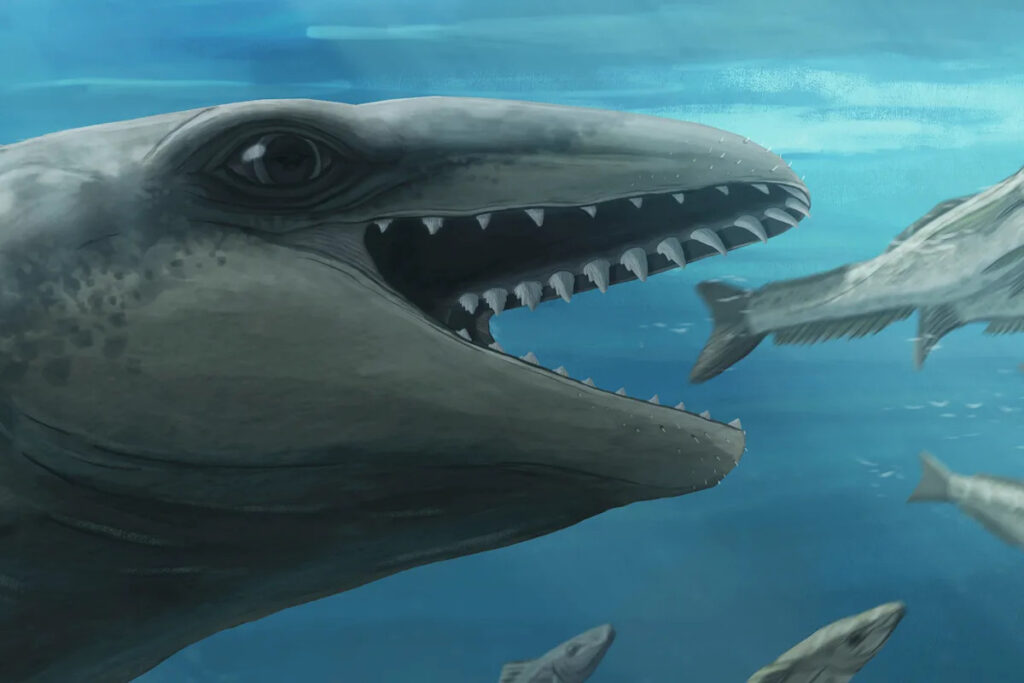
A recent discovery on an Australian beach has unveiled a new species of prehistoric whale, shedding light on the evolution of these marine giants. The fossil, dating back approximately 25 million years, was found at Jan Juc Beach in Victoria, Australia, and has been named Janjucetus dullardi. Researchers from Museums Victoria announced the findings in the Zoological Journal of the Linnean Society, highlighting the significance of this rare find.
The fossil represents a juvenile specimen that was notably smaller than modern whales, fitting comfortably into a single bed. Unlike today’s gentle giants, Janjucetus dullardi exhibited a fearsome appearance, complete with razor-sharp teeth and bulging eyes the size of tennis balls. According to Erich Fitzgerald, senior curator of vertebrate paleontology at Museums Victoria Research Institute, this creature, while reminiscent of a “weird mash-up between a whale, a seal, and a Pokémon,” was distinctly its own species.
Insights into Whale Evolution
The discovery of Janjucetus dullardi is particularly important as it represents only the fourth species identified from the group known as mammalodontids, which thrived during the Oligocene Epoch, around 34 to 23 million years ago. These tiny predators reached lengths of about 3 meters (10 feet) and are considered an early evolutionary branch leading to modern baleen whales, such as humpbacks and blues.
Fitzgerald emphasized the rarity of such finds, stating, “Cetaceans represent a fairly miniscule population of all life.” He noted that millions of years of erosion and ocean currents often destroy whale skeletons, making it a miracle to uncover fossils with sufficient detail for identification. The partial skull discovered at Jan Juc Beach, which included ear bones and teeth, has provided a unique glimpse into the anatomy and lifestyle of this prehistoric creature.
An Amateur Paleontologist’s Triumph
The fossil was discovered by Ross Dullard, an amateur fossil hunter who was on a routine search during low tide. Dullard spotted a black object protruding from a cliff and, upon further inspection, dislodged a tooth. Recognizing the significance of his find, he contacted Museums Victoria, where Fitzgerald quickly suspected a new species.
Dullard expressed his excitement, stating, “It’s literally been the greatest 24 hours of my life.” Following the confirmation of the new species, he celebrated with his colleagues and family, who have supported him throughout his six-year quest to uncover the mystery of the fossil. He plans to host a fossil-themed party, complete with cetacean games and whale-shaped treats, to mark this monumental achievement in his paleontological journey.
The significance of Janjucetus dullardi extends beyond its peculiar appearance. It provides valuable insights into how ancient cetacean species adapted to their environments and offers clues about how modern marine life may respond to ongoing climate change. As researchers continue to study these prehistoric creatures, they hope to unlock further mysteries surrounding the evolution of whales and their adaptations over millions of years.







